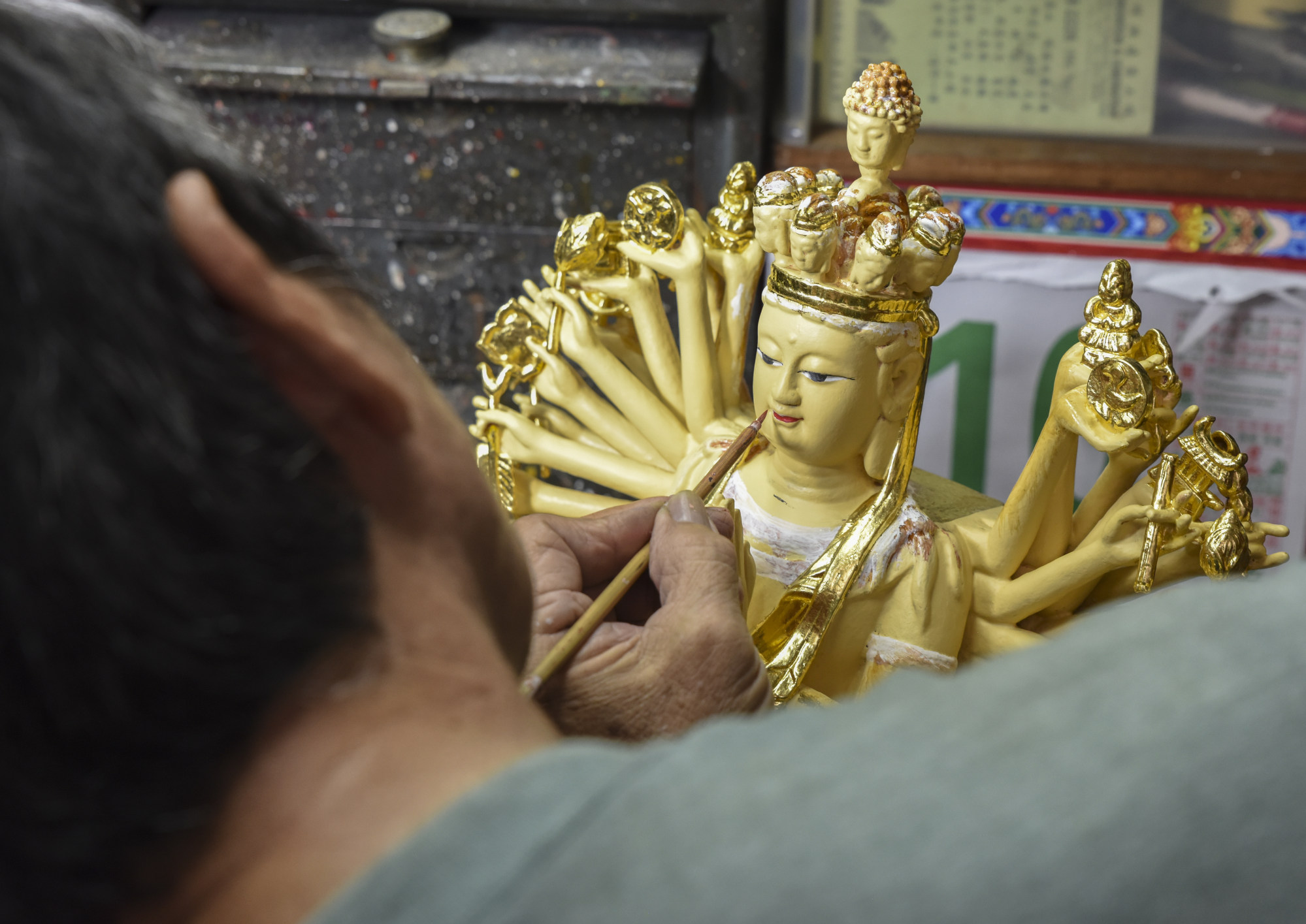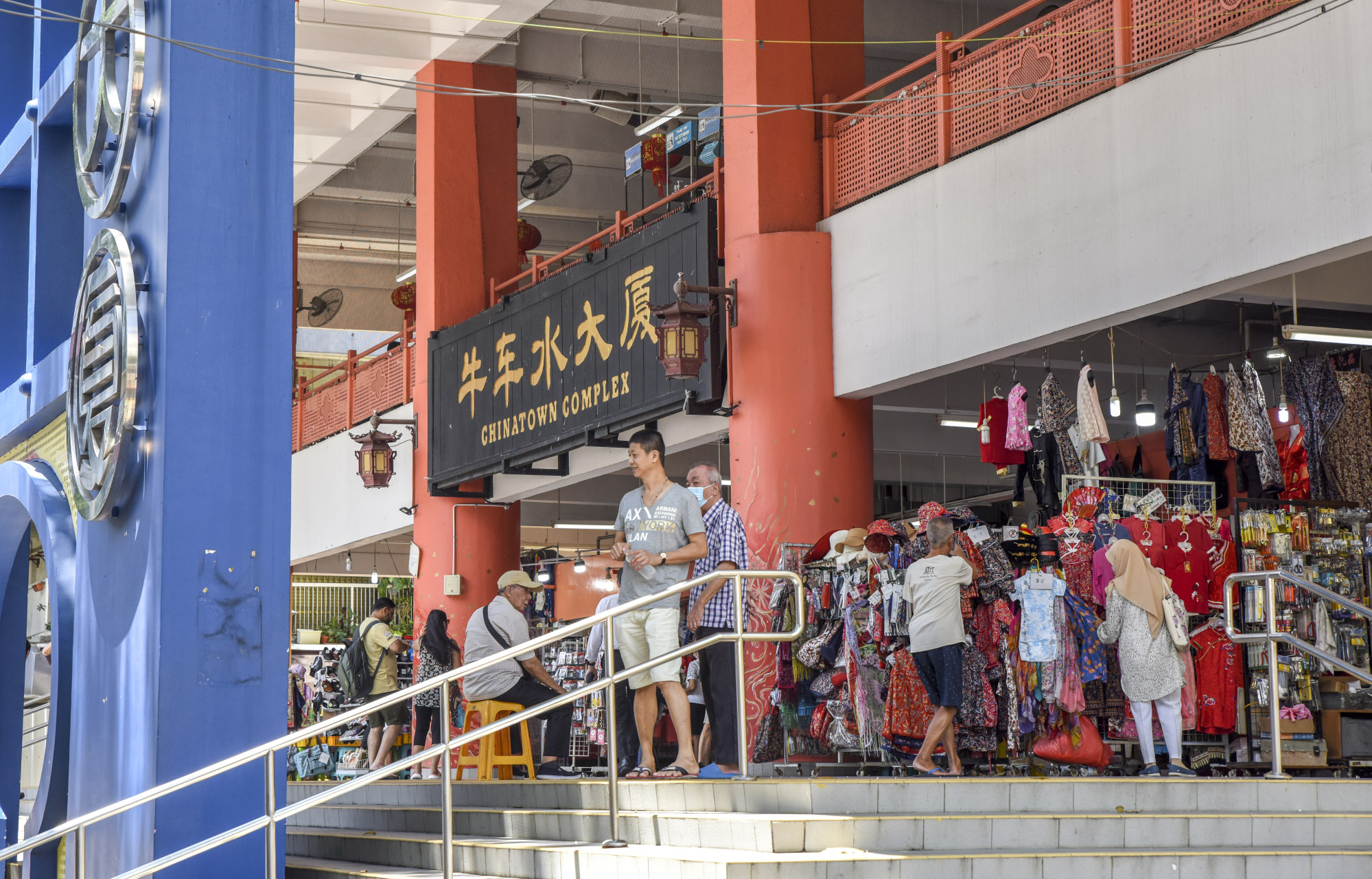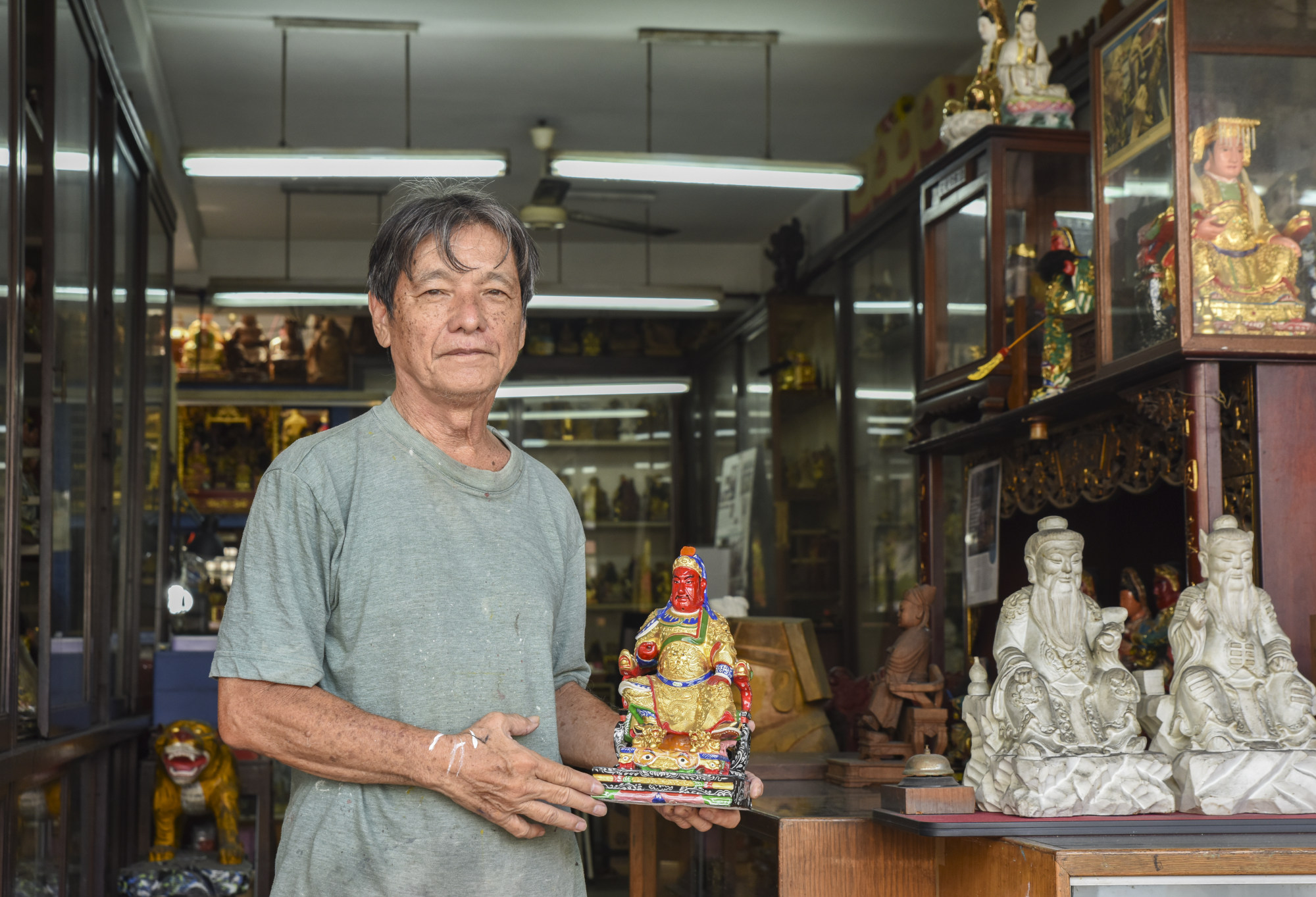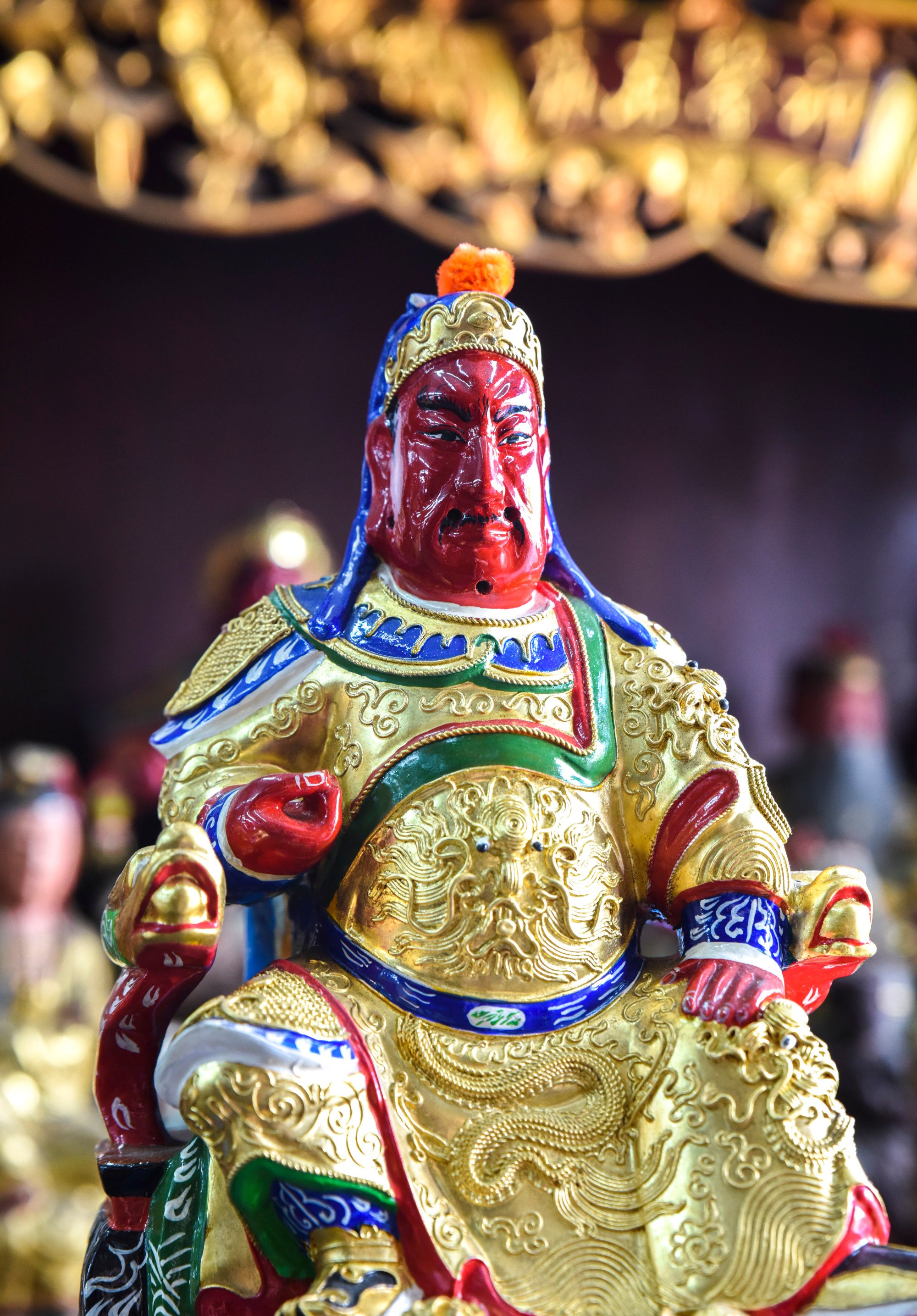In Singapore, small versions of this goddess are birthed each week at Say Tian Hng, the city state’s only surviving Taoist idol workshop. Its family of artisans hand carve a variety of deities from blocks of camphor wood before embellishing them with paint.

For many years, the face of this well-known business has been Ng Yeow Hua’s now 92-year-old mother, Tan Chwee Lian.
When her husband, Ng Tian Sang, died, 11 years ago, the matriarch assumed a heavy role as both an artist and a figurehead of the studio.

Now, after more than 70 years of making Taoist idols, Tan’s artistic career is over.
“I no longer craft the effigies as my eyesight is now no longer good enough,” she says. “But I still go to the shop every day to help out with simple tasks, such as paperwork, cleaning the sink or helping customers with their queries.”
Later, the family set up shop on the Quemoy Islands, off the Xiamen coast and now part of Taiwan.

In the late 1800s, the family of artisans uprooted once more in search of opportunity. They were led by two brothers to British Singapore. The free trading port attracted so many immigrants from China that, nowadays, more than 70 per cent of its population is ethnically Chinese.
Singapore’s oldest Chinese temple, Thian Hock Keng, has been welcoming worshippers since 1830. This colourful complex is dedicated to the goddess of the sea, Mazu, but it also has a shrine to Guanyin. And when the temple needs new statues, it calls upon Say Tian Hng, which has been operating in the Lion City continuously since 1896.
Mother-of-seven Tan married into the family in 1949.

Crafting each Taoist idol takes many hours, or even days, depending on the size, says Ng. They can be as short as 15cm (just under six inches) or as tall as one metre, with prices starting at S$500 (US$375).
“As Singapore developed, some of the deities’ social functions were taken over by the state,” he explains. “Improved maternal and child health due to the improving healthcare infrastructure meant there may have been a less urgent need to pray to Zhu Sheng Niang Niang, the deity who offers protection over childbirth.
“The greater ease of air travel meant there was less need to pray to Mazu, the goddess of the sea. Thus, the most popular deities today tend to have more generalist, rather than specialised, functions and personas.”


As we chat, tourists file in and out of the store. Tan sits behind her desk, smiling as always. She has become used to having so many visitors because, in recent years, the business has sought to modernise. Rather than rely solely on income from selling idols, it is increasingly tapping the tourism market.
Adding to a 90-minute class on making Taoist idols and a two-hour walking tour that examines the Taoist myths associated with various Singapore locations, Say Tian Hng has this year launched three new workshops:
1. “My Grandma’s start-up”, in which Tan’s 43-year-old grandson, Ng Tze Yong, explains his grandmother’s long career as a Taoist idol artisan.

3. The aforementioned “How to Give a Middle Finger, Song Dynasty Style”, an occasional talk that delves into the history of the Song dynasty (960-1279) and some of its rollicking tales.
This diversification is partly down to the influence of Ng, who is trying to secure the long-term future of the business. More than seven decades since she birthed her first Taoist deity, Singapore’s famously artistic grandmother has passed her tools to a new generation.
Stay connected with us on social media platform for instant update click here to join our Twitter, & Facebook
We are now on Telegram. Click here to join our channel (@TechiUpdate) and stay updated with the latest Technology headlines.
For all the latest Art-Culture News Click Here
